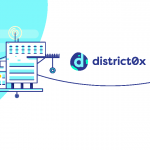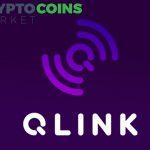Centralized Exchanges such as Poloniex, Bittrex, Kraken, have been the only way to buy and sell cryptocurrency with volume in the past. Traders and investors have had to deal with closed wallets, delays in sending and receiving funds, and now reports of insider trading. So why do we keep using them? Quite simply we have few safe options that can deal with these challenges.
This is where HEAT comes in. HEAT will utilize the benefits of scalability, multisignature currencies which increase security, and an array of currency pairs which gives traders and investors options in an evolving market.
WHAT IS HEAT?
Short for “Heuristically Enhanced Asynchronous Transactions,” HEAT is a self-appointed “Gen 3.0” cryptocurrency platform that focuses on resolving the two most pressing pitfalls of the existing 2.0 and 1.0 cryptocurrency server software solutions; Low transaction rate throughput and the burden of hosting large blockchain files on any single p2p node.
HEAT is capable of handling over 1000 transactions per second, while supporting “unlimited scaling.” To complement the Gen 3.0 status, on the application layer HEAT includes and enhances all the latest 2.0 crypto features such as distributed apps (Java and JavaScript), instant off-chain p2p messaging, multiple cryptocurrency support and multi-sig custom colored tokens with Asset-to-Asset trading.
FEATURES.
Scalability.
Many of us have heard of the issue of “scalability” which most popular blockchains face. The difficulty of handling an ever increasing number of transactions on the blockchain puts a growing pressure on the resources of each node in the network.
Of the current generation of blockchains (e.g. Bitcoin, Ethereum, Dash, NXT) most have an embedded database where they store both all blocks data and all balances. Those embedded databases give the user the ability to ask the running coin daemon for any block or transaction from the past. While in lack of a better solution this sure helps users, it in fact does not help the core p2p operations at all. All access that is really required on constant basis is access to the most recent 720 blocks.
HEAT completely removes the embedded databases to store transactions and blocks, account balances and the order books for all asset pairs. Instead it uses custom built storage and access solution, based on Memory Mapped Files, to allow data stored on disk to be accessed in random sequence and at near RAM memory speeds - without the need to load this data in RAM.
For storing the consensus blockchain, HEAT does not use single blockchain file ever increasing in size. Instead it makes use of serialized blockchain files of a limited size, accompanied by small balance files. When the latest blockchain file reaches threshold size (of a few GB, specified at genesis block) the protocol will automatically switch to a new blocks file cryptographically linked to the previous blocks & balance files. The details to achieve this are in principle rather similar to how blocks are chained to each other.
Through these radical changes it is possible to sustain at least 1000 transactions per second load 24/7 all year round.
Two-tier rewards.
HEAT, like most public decentralized ledgers, wants to incentivize active network participants and uses a hybrid award system to reward contributing users;
1.Reward for generating blocks (Proof-of-Stake, POS).
This involves running a full node, unlocked and with the user’s stake applied to generate blocks. Block generation (“forging”) is a mechanism of creating new HEAT tokens and distributing transactions fees as a reward to node runners, based on the amount of HEAT tokens available on account unlocked (signed in) by a node.
An account that generates a block is awarded yearly declining guaranteed reward, plus all transaction fees, until after 4 years when the guaranteed amount becomes 0 and the block reward consists of just the transaction fees for the block.
2.Reward for storing the blockchain (Proof-of-Presence, POP).
Only the most recent blocks file is distributed amongst all p2p nodes, previous blocks files are not needed for normal p2p operations. HEAT incentives users to store and make available previously archived block files.
Individual nodes can host any number or just one of these files, a bit like torrent files. HEAT’s block algorithm grants the highest chances of reward for files whose presence in the peer network is low. But this hybrid block reward is just a glue-on to the core PoS to incentivize storage of transaction archival. It doesn’t affect the consensus model, which lays on the trusted and tested – and very attack resilient proof-of-stake.
Peer to Peer Decentralized Exchange.
The HEAT wallet has multiple currency support for major cryptocurrencies including BTC, ETH, FIMK and NXT. Due to this, HEAT allows trading of other cryptocurrencies directly from the wallet without using a centralized exchange.
Colored coins.
HEAT supports a limited scripting language that can be used to store metadata on the blockchain. Colored Coins is a concept that allows attaching metadata to HEAT transactions and leveraging the HEAT ledger infrastructure for issuing and trading immutable digital assets that can represent real world value. The value of such digital assets is tied to a real-world promise by the asset issuers that they are willing to redeem those digital tokens for something of value in the real world.
Digital assets on top of the Heat ledger can be used to issue Financial assets (securities like shares, commodities like Gold or new currencies), prove ownership (A digital key to a house or a car, a concert ticket), store information (Documents, Certificates) or create smart contracts.
The advantage given by using the blockchain as the backbone for such asset manipulation is that one can rely on the blockchain’s transparency, immutability, ease of transfer and non-counterfeitability to transfer and trade such digital tokens with unprecedented security and ease.
The platform will support multiple different technical routes to issue, price and trade the digital assets on its Asset-to-Asset Exchange.
Fiat trading.
The colored coins can also be used to represent national fiat money [EUR, USD]. While it was technically possible to do this prevously, the obstacles to achieve real fiat trading on blockchain are more acutely related to regulatory and legal obstacles.
Thus the point of entry is often too high - or rather obscure - for licensed money transmitter business to engage in mission critical fiat operations through experimental p2p public ledgers. HEAT Ledger Ltd has joint venture agreements in place with EU wide money transmitter license pending, making the prospect of transferring real fiat money in a cryptographic ledger a reality.
Crowdfunding.
HEAT’s flexibility and robust processing capabilities are specifically fit for any kind of crowdfunding and share issuance applications. Evolved from traditional crowdfunding, projects crowdfunded through HEAT’s system may issue tokens for investors and enable immediate or later phase trade of these tokens on the HEAT decentralized [or company’s privately commissioned] cryptoledger. Large volume trading with instantly matched trades no longer produce any hindrance thanks to HEAT’s HFT processing speed.
Distributed services architecture.
HEAT doesn’t provide smart contracts as such - but it provides something better; Distributed Services Architecture. DSA is HEAT’s answer to blockchain based applications. What has been created is a stateful interactive communication protocol much like the HTTP protocol that is in use today for the web. This allows anyone in the world to write an application in a language supported by the JVM script engine (Java, JavaScript) and have the distributed app serve clients interactively using the blockchain as (encrypted) distributed state full memory space. Supporting Java, this is a never before seen feature on open source blockchains.
Multi-sig accounts.
HEAT accounts can be assigned multi-signature status. This means that the owner of the account can send a special transaction which includes definition of other accounts that from then on have to also sign each transaction coming from that original account, for the tx to be accepted in the blockchain. Since these multi-sig settings also go in a storage section that cannot be easily pruned later on, the transaction fee for this initial “mark-account-multi-sig” transaction is higher than for normal payment transactions.
HEAT (HEAT) OVERVIEW.
Coincapmarket ranking: 224.
Current coin Value: $0.256940 (2.59%).
Market Cap: $7,358,334.
24hr volume: $19,552.
Circulating Supply: 28,638,336 HEAT.
The Heat Ledger Limited Liability company arranged seed funding round through cryptocurrencies in August 2016. 25 million HEAT tokens were then distributed to the investors and stakeholders on pro rata basis in January 2017.
The company will arrange 2nd investment round and public share offering of stock equity in Q1-Q2 2017. New company shares will be released to constitute 20% - 25% of total company equity, in order to raise between 500k to 1.5M EUR funding to further develop company operations.
Exchanges.
- Heatwallet.com Decentralized Asset Exchange
- Openledger.
- Alcurex exchange.
- C-CEX exchange.
- Fitcoin Exchange assets in the FIMK blockchain.
Wallets.
HEAT wallet for token transfers and private messaging in the decentralized p2p network:
- https://heatwallet.com (web wallet).
- https://github.com/Heat-Ledger-Ltd/heatwallet/releases(installable client, for both thin client use and full node use).
- https://github.com/Heat-Ledger-Ltd/heatledger/releases (installable server for full node).
[currencyprice currency1=”HEAT” currency2=”usd,eur,btc”]
[currencygraph currency1=”HEAT” currency2=”usd”]























